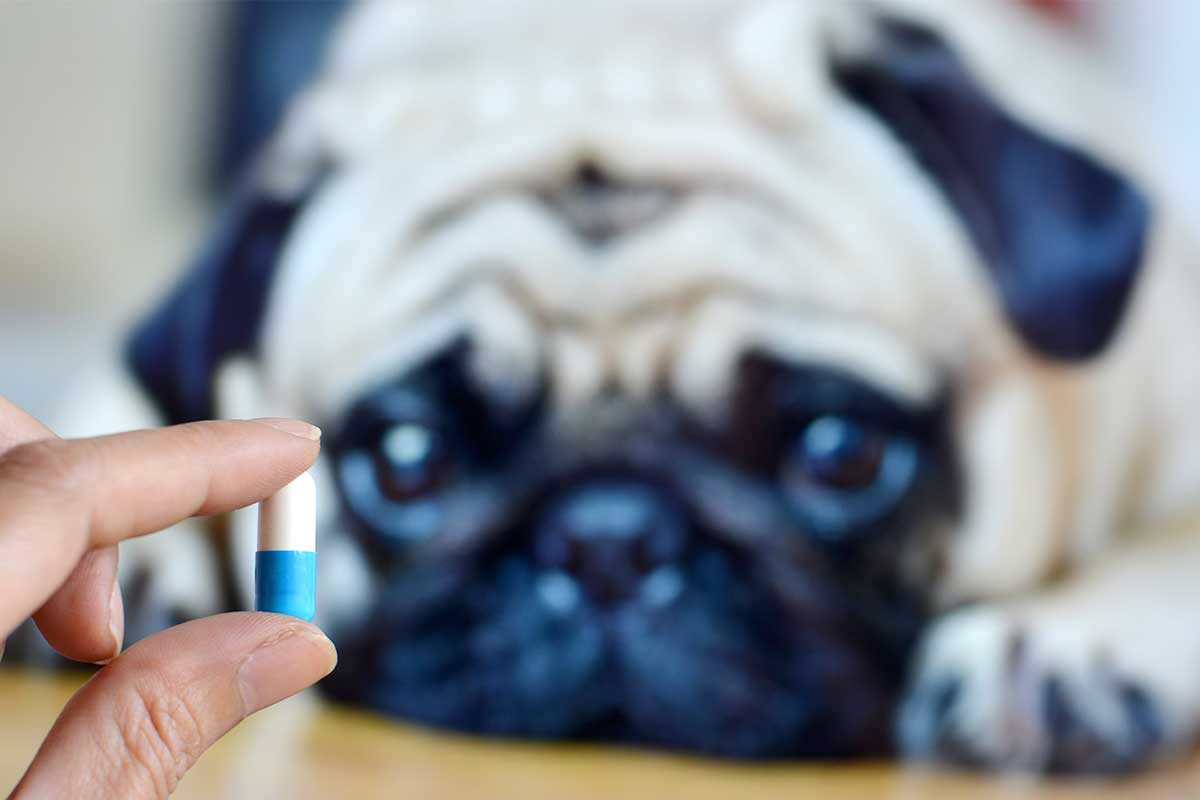You can expect that at some time during your pet’s life, you will need to give her some medications. It may be antibiotics for an infection, daily thyroid medication, or a supplement to help keep her healthy. Some pets will end up on daily treatments for life. To ensure that medication does its job, you want delivery of it to be as easy and free of stress as possible for your pet.
Pills
Many medications come in pill form. Your veterinarian may be able to get medications compounded into a tasty chewable treat. Compounding may add to the cost but can be worth it for a pet who happily devours the medication that way. That is not possible for all medications, and some pets don’t fall for the tasty treat idea anyway.
There are other ways to get a pill into your pet. One tried and true method is “disguising” the pill. Hide the pill in a food item your pet loves. For dogs, peanut butter, liverwurst or cheese often works. Ideal treat foods are a bit sticky and carry a fairly heavy scent to hide any trace of the pill.
Make up at least three balls of the treat, even though only one will have medication hidden in it. Offer your pet one of the “clean” balls, follow it with the medicated one, then end with another clean one. You can rotate when you give the medication treat. This way, even if your pet is suspicious, she gets plenty of unmedicated treats to balance it out.
This method works for many pets, both short term and long term. Always check with your veterinarian that it is okay to give the medication with a treat and that the type of treat you want to use is suitable. For example, tetracycline should not be given with any dairy products as calcium binds the drug and renders it less efficacious.
Some pets refuse to be fooled. In that case, you need to help them learn to take a pill. Start by getting your pet used to an oral exam. To deliver a pill, place your hand over the top of the muzzle and gently squeeze in right behind the canine teeth. The mouth automatically opens – at least a bit. With your other hand, gently pull down on the lower jaw for a wider opening. Place the pill as far back as you can safely reach. Then close the mouth and gently stroke the throat. Always try to follow the pill with a treat or a drink. That helps to prevent the pill from getting hung up in the esophagus and causing irritation.
Liquids
Liquid medications can also be compounded in many cases into flavored versions. Tuna is popular with the feline crowd, but many dogs like that flavor too. Flavored liquid medications can often simply be added to your pet’s food.
For the dog who “knows” you are trying to put one over on her and for liquid medications that can’t be compounded, you need to deliver the medication orally. Your veterinarian will dispense a plastic syringe to give the medication. This will be clearly marked so you can adjust and give the exact amount needed. Since the syringe is plastic you don’t need to worry about your dog chewing on it a little.
Start by trying to simply slip the syringe into the corner of the mouth, under the lips. Dispense the liquid slowly. A fast squirt may deliver some into the trachea and cause coughing and irritation. Most pets lick and swallow. A dog with loose lips (known as flews), may get liquid hung up in the folds and not into the mouth. Make sure it goes in the mouth.
With practice, you will become quite skilled at medicating your pet!
This article was reviewed/edited by board-certified veterinary behaviorist Dr. Kenneth Martin and/or veterinary technician specialist in behavior Debbie Martin, LVT.








